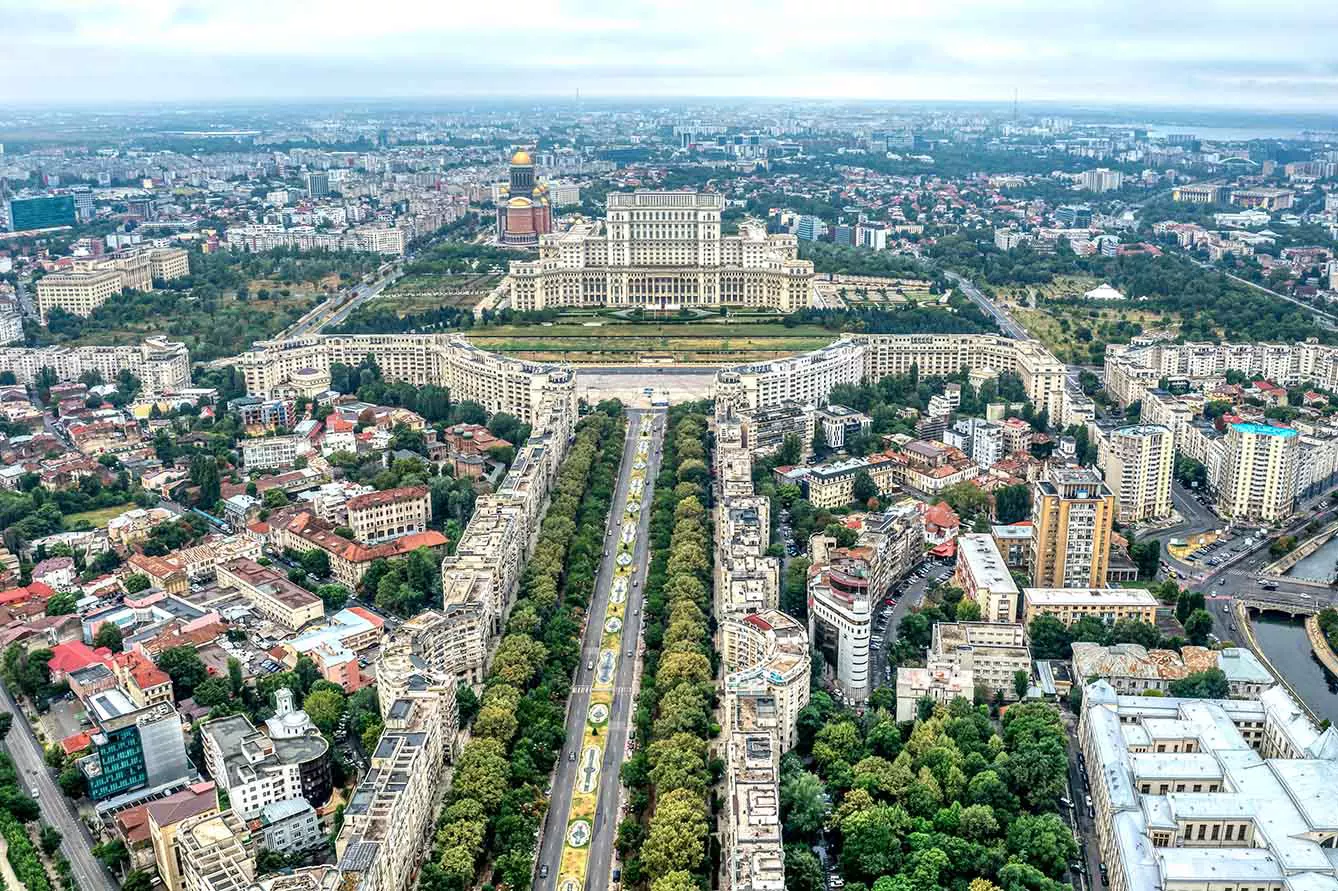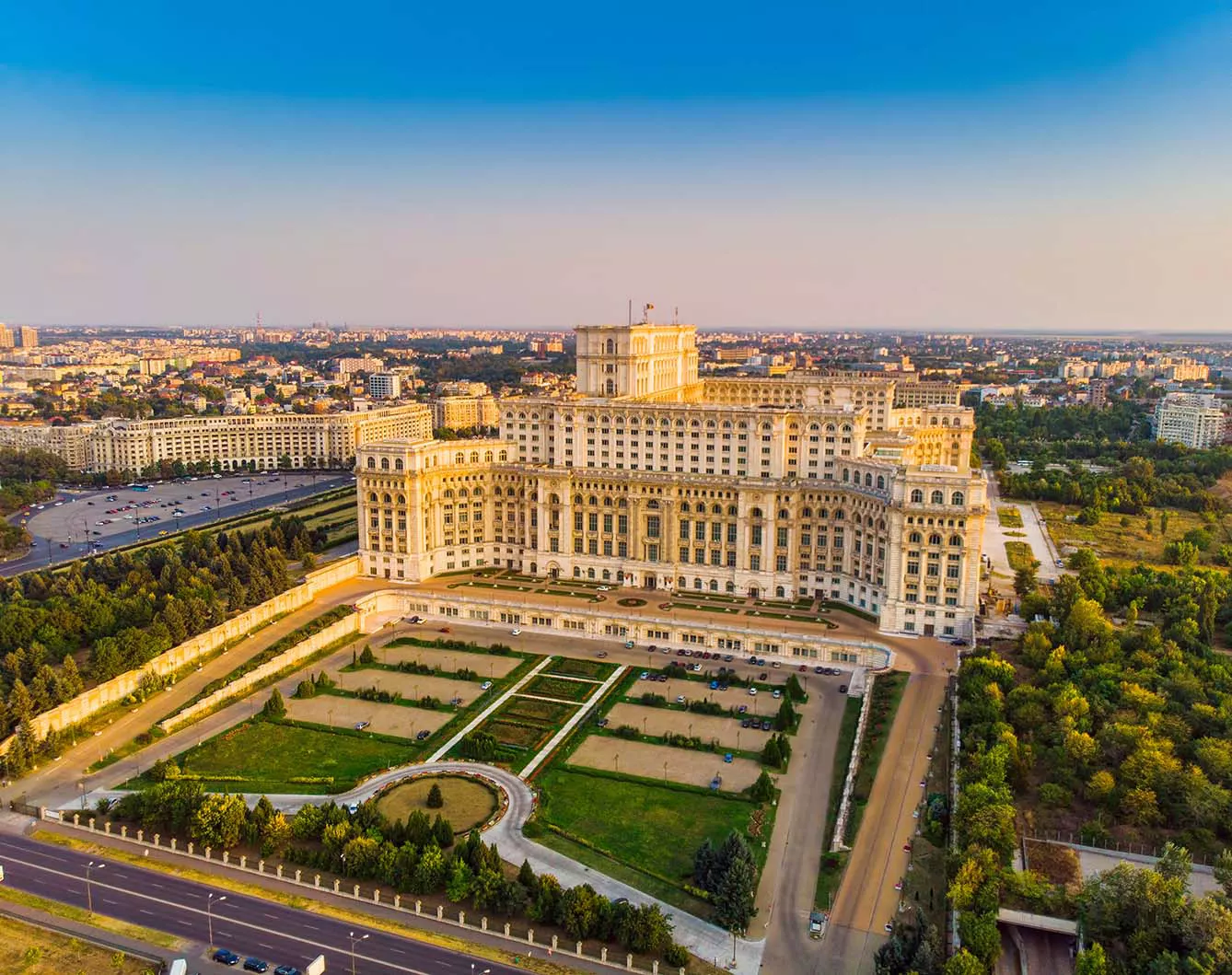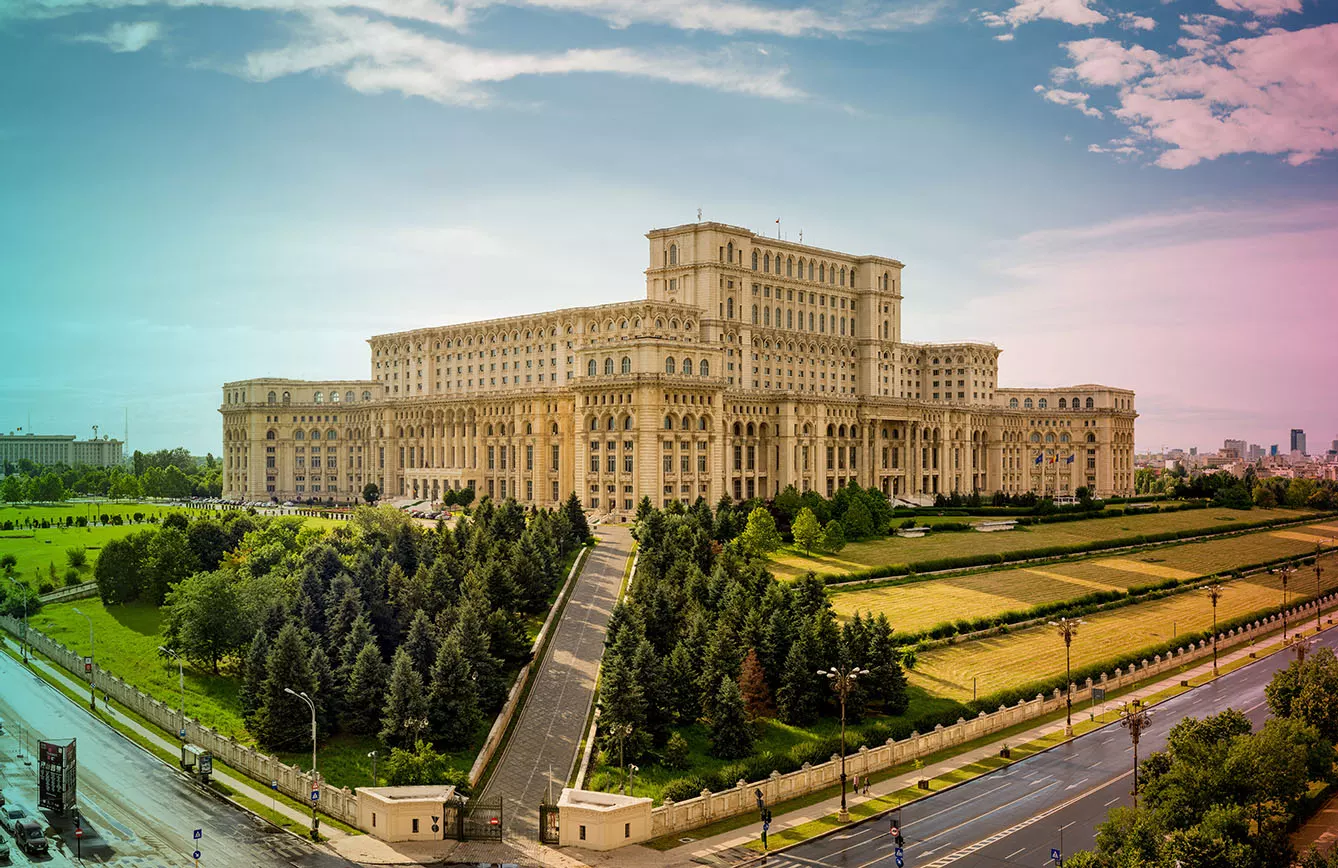Today, this communist folly hosts Romania’s Parliament – not to mention the title for the world’s heaviest and most expensive building. However, the walls and chandeliers represent more than apparent wealth. Find out what’s hidden inside the walls of the house built for this megalomaniac leader.
People’s House or Ceausescu’s Palace
If you’ve ever visited Bucharest, you have most likely seen the Palace of the Parliament – or the People’s House. This colossal and grandiose building, culminating at the end of the Uniri’s Boulevard and reining atop Spirea’s Hill, similar to a statue on a pedestal, is heaviest building in the world by weight and the world’s most expensive administrative building.
The building itself is one of the most ambitious architectural masterpieces of the 20th century. Still, this controversial place’s history and secrets contribute to the site’s imposing aura.
Restoration or an attempt to rewrite history? Heaviest building in the world!
The decision to build one of the world’s largest superstructures is not usually one made overnight. That is, of course, unless you are Nicolae Ceaușescu. The humongous “House of the Republic,” as it was to be called, was part of an intensive plan called Project Bucharest intended to restore the capital city of Bucharest – even if that meant partially erasing it.
The ultimate goal was to transform the city into a replica of the North Korean capital city, Pyongyang. The building was estimated to have cost USD 1.7 billion at the time of his assassination in 1989. As of 2020, it was estimated to cost USD 4 billion dollars, making it the most expensive administrative building in the world.
No comparison is vivid enough to showcase the grandeur of the building. However, if you were wondering what can fit inside a 365,000 square meter, 84 meter-high palace, know that it hosts two chambers of the Parliament of Romania, three entire museums, and a massive international conference center, all at about 30% of its capacity. The remaining 70% remain empty, aside from the gigantic spaces designed for vast portraits of the Ceaușescu couple located at the end of each hall.


On a deeper level – Romanian parliament building
As mentioned before, the building goes 84 meters up from ground level, but it also goes 92 meters below ground. Hidden under the enormous and intricate 12-story palace lay no fewer than eight stories, the lowest of which hosts a nuclear bunker, which is linked to the city’s main institutions by 20 km of extensive catacombs that are wide enough for cars to drive through.
Ceaușescu was obsessed with security and feared a nuclear war. Therefore, the levels underneath his would-be home are filled to the brim with secret – and not so secret – tunnels and rooms.
Such as with Transfăgărășan, another textbook example of the leader’s security mania and grandiose ambitions, the building of the ironically called People’s House was made at the expense of human life, costs which one may say even exceed the monetary ones. Close to 100,000 people worked on the building of Ceaușescu’s Palace; among them, thousands are presumed to have lost their lives between the walls of the 1,100-room building.
A weighty legacy
The Palace of the Parliament, former home to Romania’s most notorious communist leader, is the heaviest building in the world, weighing 4.10 million tons. The secrets, desires, and loss of human life, together with the destruction of close to 5% of the city, all the sacrifices and atrocities committed to build the massive site weigh an immeasurable burden on the shoulders of the Romanian national conscience.
Today, many Romanians are faced with various feelings when facing the magnificent yet monstrous building that went from being the dictator’s palace to the people’s parliament, a monument of the communist regime that, more than 30 years after the Revolution, is still desperately trying to symbolize democracy and freedom.
Find out more about Romania and read an article about Romanian Sphinx.







